Get a 24 hour weather forecast
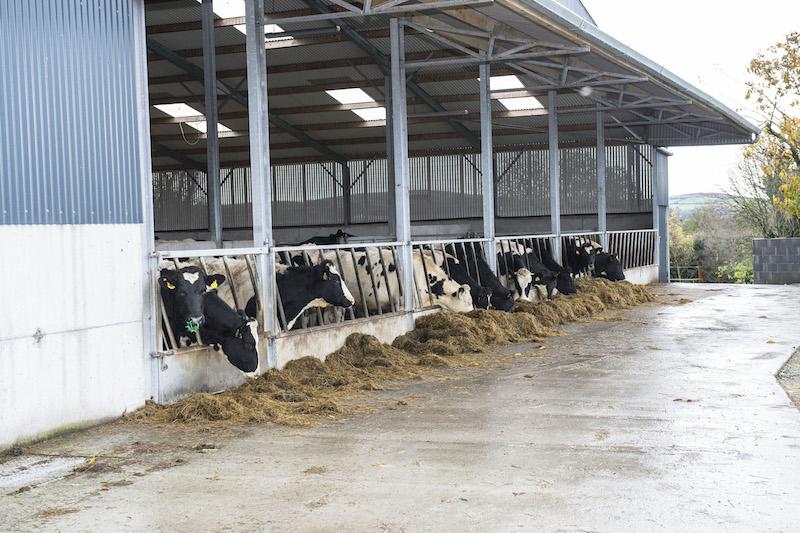
Mineral feeding for the pre-calving cows
Nutrition for breeding
Your nutritional aims for successful breeding are:
For more details on ‘Feeding for Breeding’ see https://www.dairygoldagri.ie/Feeding-for-Breeding
Key point: Achieving BCS targets and having cows on an increasing plain of nutrition pre-breeding are critical to avoid slippage of calving dates.
Grass Shortage
Grazed grass is the most economical way to feed your cows. If you are in short on grass, feeding supplementary concentrates will be economical in most cases.
You should continue to use supplementary concentrates strategically with availability of top-quality grass, grazing conditions and individual circumstances (cow milk yield etc.) being key factors in determining if you supplement or not at this time of the year. Grass quality and particularly grass dry matter intake (reduces dramatically in cooler, wet conditions) are often overestimated on farm. Flexibility is required on farm to introduce and remove concentrates as conditions change.
Key point: Feeding supplementary concentrates at strategic times (e.g. during a wet period or when grass is in short supply) is almost always economical.
Grass Plentiful
It may make sense for you to feed a small amount of concentrates even when you have adequate grass depending on your individual circumstances. You need to calculate the cost versus the return.
Cost: €0.25 to €0.32 per Kg (concentrate costing €250à€320 per tonne)
Return is dependent on three factors:
Your cows need adequate levels of vitamins, minerals and trace elements to maximise their performance and fertility. Supplementing a full suite of vitamins/minerals through other means e.g. powdered minerals is likely to cost in the region of €0.22 per cow per day.
Example – Farmer feeding 2Kg of a concentrate costing €285 per tonne gets a 0.4L milk yield response per Kg of concentrate fed considers switching to Mg through the water (€0.18 per head per day) and feeding powdered minerals (€0.22 per cow per day).
Based on the above, it is possible feeding 1Kg to 2Kg of concentrates will offer a return on investment on some farms and will be uneconomical on others.
Ultimately, your costs and returns will be depending on your individual circumstances (cow type etc.). However, the above does not account for the convenience factor of concentrates or the peace of mind they can offer (knowing cows are covered for grass tetany and are being supplemented properly with vitamins, minerals and trace elements).
Key point: In the post-quota era, even with adequate grass, feeding up to 2Kg of concentrates to typical spring calving cows at this time of the year is likely to be economical on some farms.
Dry cows should receive pre-calving minerals from 6 – 8 weeks before calving.
The main aim of this feeding is to
– Prevent milk fever, and retained cleansings,
– Produce a healthy calf,
– Ensure the cow calves down in the correct mineral status.
Milk fever.
If you herd is showing 5% clinical milk fever then 33% of your herd are suffering from sub clinical milk fever. Sub clinical milk fever is a gateway disorder, with these cows being more susceptible to retained cleansings, metritis, ketosis, lower production, poor fertility performance.
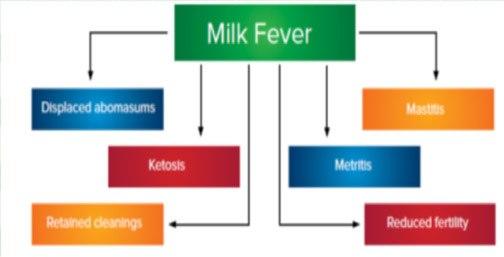
When assessing your herds risk of milk fever be wary of:
Milk fevers are a lack of calcium and can therefor happen at any stage.
Why does it happen at calving?
A dry cow’s calcium requirement calcium is 33-50% of her milking requirement. Grass silage generally supplies an excess of calcium for a dry cow but a deficit of calcium for milking cows. During the dry period the cows stores this excess. Once she starts to bag up, her diet cannot meet her requirements and she needs to draw calcium from her bones. This switch from storing to drawing calcium requires a hormonal change, which is controlled by the cows’ magnesium and vitamin D nutrition.
The potassium effect:
An excess of potassium limits magnesium absorption, delaying the release of calcium and increasing the incidence of milk fever. Grass silage with greater than 1.5% potassium can cause issues. Grazed grass can contain 2-2.5 times the level of potassium as grass silage leading to higher levels of milk fever from cows calved off grazed grass.
Milk fever check list:
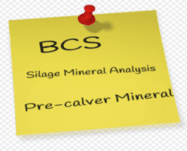
Grass silage;
A. Check the potassium status of grass silage.
If its greater than 1.5%:
– dilute silage with straw, hay, maize silage, wholecrop. Ensure that the cows UFL and PDI requirements are being met.
– feed adequate Mg and vitamin D.
B. Calcium status of your silage. A dry cow has a requirement for 50grms of calcium. Silage calcium percentages of greater than 0.5% are over supplying calcium (grass silage only diets). Do not feed additional calcium in minerals. Feed adequate Mg and vitamin D.
C. Mg status of your silage. The dry cow requires 40grms of Mg. Good quality pre-calver minerals will supply 25grms. Your silage needs to supply the rest. Is it?
Grazed Grass;
Limit intake by calving cows on bare paddocks.
Calcium; dry cow does not require large amounts of Ca, pre-calving mineral should contain less than 2% Ca.
Magnesium, Pre-calving mineral should supply 25grms of Mg per head per day
Vitamin D, pre-calving mineral needs to supply greater than 10000iu/per day
Boluses gives additional calcium at calving time, especially for older at risk cows in high body condition score, BCS 4+. Calcitrace D3 bolus can be used in cows at risk of developing hypocalcaemia. One bolus at the signs of calving and another 24 hours later.
Retained Cleansing
Retained cleansings are predominately a secondary issue from sub-clinical milk fever and are therefore controlled by similar management to milk fever.
Pregnancy energy requirement, month 7 – 9
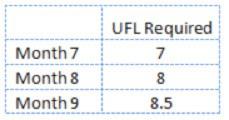
When assessing your herds risk of retained cleansings be wary of:
Dairy cows intake naturally declines as she’s approaches calving. This decline comes as her pre-calving energy demand is peaking. Silage only diets will struggle to meet the cows’ energy requirement in the final 3 weeks pre-calving.
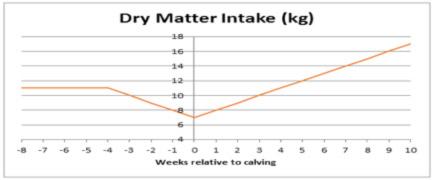
With over conditioned cows this intake decline can be up to 30% higher.
Cows in a high degree of negative energy balance at calving are at an increased risk (by 80%) of suffering from retained cleansings.
Feeding 2-3 kg of pre-calver gold (silage quality dependent) will help fill the energy gap and ensure your cows are calving down in a positive energy status.
Ca status: As retained cleansing are a secondary disorder to subclinical milk fever it’s important to control to cows calcium status using the same mineral nutrition as with milk fever.
Selenium: pre-calving needs to supply between 3-5mg (dependent on silage Se status). The form of the mineral is also important. Organic forms of the minerals like Selplex being more bio-available to the cow.
Vitamin A : pre-calving needs to supply approx 40000iu per day
Retained Cleansing Check List
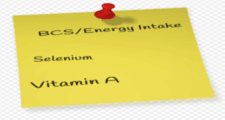
Healthy Calves:
Limiting calf mortality and morbidity is influenced by getting 3 litres of good quality colostrum into new born calves within the first 2 hours of birth. Pre-calving minerals can influence the quality of colostrum.
For good quality colostrum the pre-calving mineral should supply
– Between 3-5mg/day of selenium.
– Greater than 500iu/day of vitamin E. In the US up to 2000 iu of vitamin E are feed per day.
Calf thrift is influenced by iodine nutrition. Ensure the pre-calving mineral supplies 50-60 mg per day.
Ensure the cow calves down in the correct mineral status.
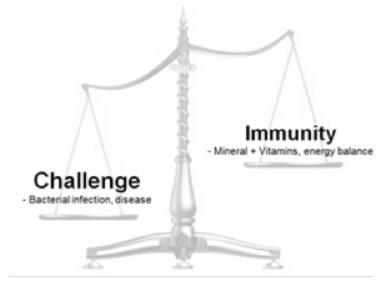
Calving is a stressful period for the dairy cow. This leads to a challenged immune system and a cow with a poorer ability to fight off infection. Through correct mineral and energy nutrition you can booster the cow’s immune system. This will lead to lower levels of metritis, mastitis, SCC, lameness and will over-all lead to better fertility performance (in conjunction with adequate post calving minerals).